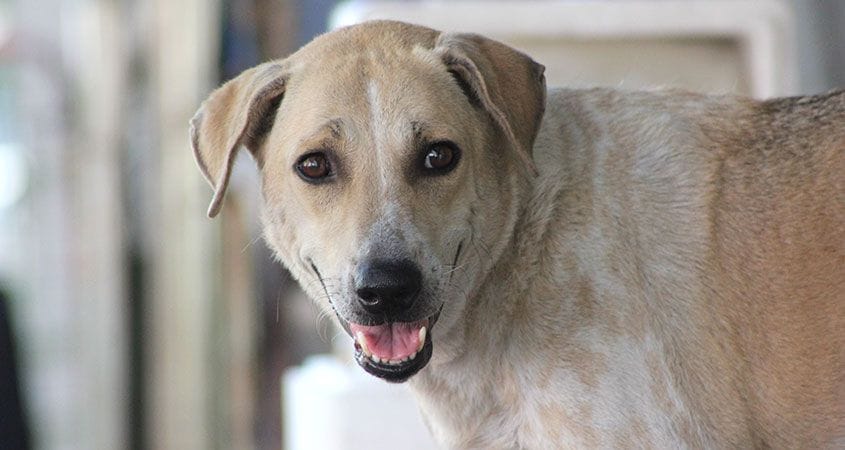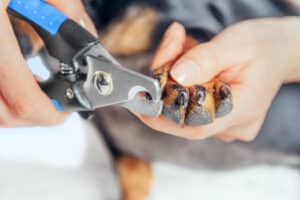If you’ve ever had a senior dog, you may have noticed that they got a little gray around the snout as they got older, not unlike humans. This makes sense, since the only difference between human hair and animal fur is the word we use to describe them. But what about the ways and reasons that humans and dogs go gray? Are they the same or different?
One thing that dogs and humans do have in common is the ability to go gray prematurely. In humans, this is defined as the onset of gray hair before 20 for Caucasians and before 30 for Africans and Asians. Yes, there is an ethnic difference, with white people graying first (and redheads being the first Caucasians to go gray), but scientists have not yet been able to explain this.
For dogs, the comparison point for premature graying is about four years, or around 30-ish in human years. So what causes premature graying? For humans, it’s really just the genetic luck of the draw more than anything else, although certain diseases and conditions can hasten the process.
There are several persistent myths about gray hair in humans. One of the most ubiquitous is the so-called “50-50-50 Rule,” which says that 50% of the population will have at least 50% gray hair by the age of 50. However, according to a study published in the British Journal of Dermatology, this is not the case. They concluded, “Calculating the percentage of people showing at least 50% grey hair coverage at age 50 years leads to a global range of 6-23%.”
In case you’re keeping score, 23% is a lot less than 50%.
Another contested cause for gray hair in people is stress. Some people think that stress can make hair turn gray, while others don’t put quite as much emphasis on stress as a cause, but rather as a contributing factor. However, a study published in Applied Animal Behaviour Science looked at premature graying in a sample of 400 dogs aged one to four years, and determined that anxiety and impulsivity — in other words, stress — were closely associated with the early appearance of gray fur.
They came to this conclusion based on a combination of objective ranking of the degree of graying based on photos of the dogs, and of self-reported personality assessments of the dogs by their owners. Researchers used a four-point “gray scale” from 0 to 3, with 0 being “no gray” and 3 being “full gray” around the muzzle. White or pale colored dogs were not included in the study because of the impossibility of rating their grayness. Also, the personality questions included multiple “distractors” so that participants could not figure out what was really being studied.
Major indicators of premature gray in dogs were fear of loud noises, as well as fear of unfamiliar animals or people. It seems likely that dogs that spend a lot of time in a state of anxiety show it on their faces at a very young age.
Stress and gray hair have been anecdotally linked in humans for years — just look at any before and after pictures of any President of the U.S. While science doesn’t yet know the exact mechanism that connects the two — or a cure for the grays — it has come one step closer to showing us that, in yet another way, we are more similar to our dogs than we thought.










